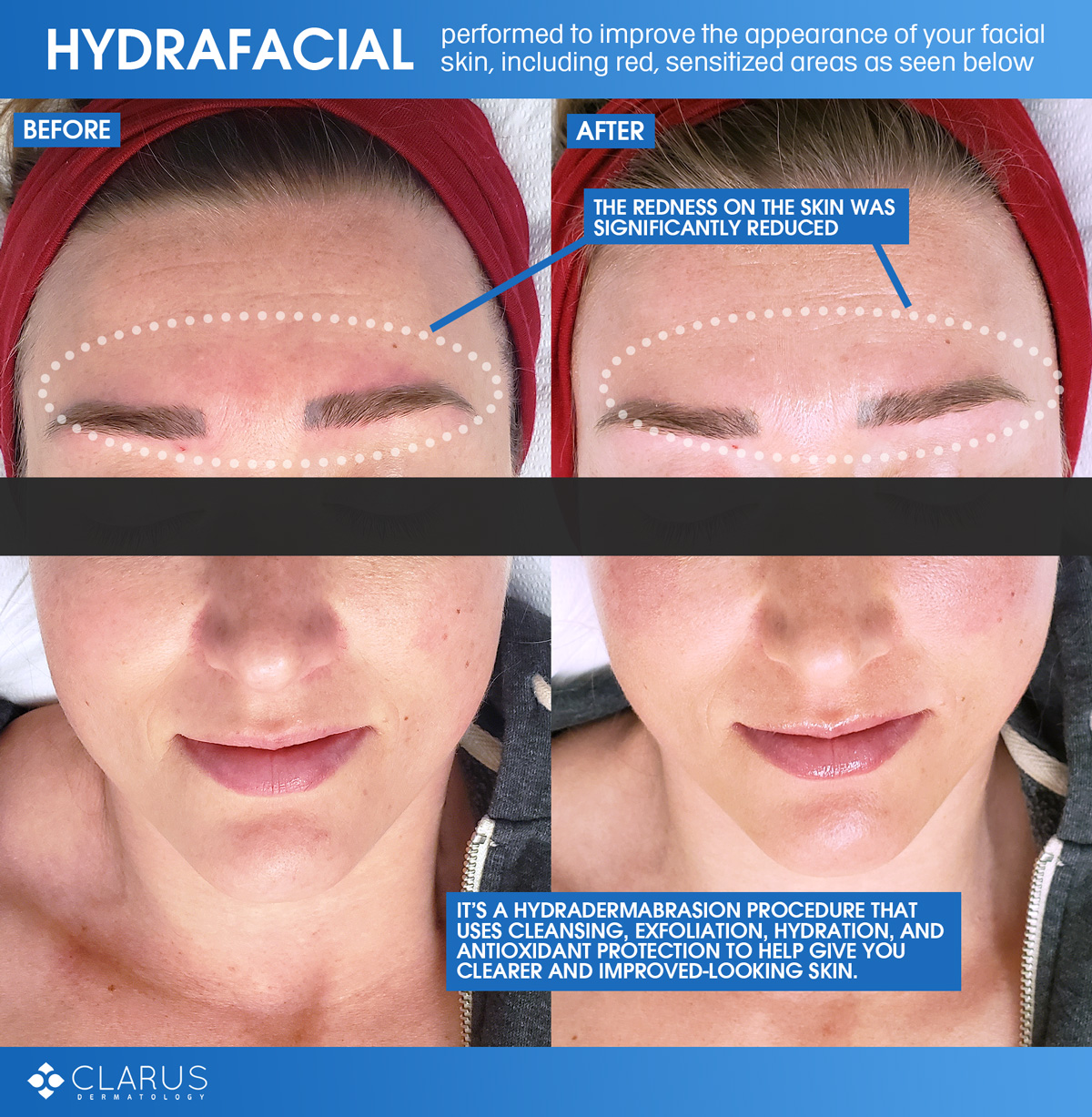
April, our Skin Technician, performs a lot of HydraFacials at Clarus Dermatology, and that’s because it’s a treatment that is recommended for any of our patients to help improve the appearance of their facial skin, including those with even the most sensitive skin. In the images here, you can see how red, sensitized areas of the skin are improved after just a single treatment.
HydraFacial can also help with decreasing wrinkles, fine lines, brown spots, and clogged pores. The treatment uncovers a new layer of your skin through exfoliation and resurfacing, followed by a removal of debris from your pores with painless suction. The skin is hydrated with intense moisturizers and then saturated with antioxidants and peptides to help bring out its best glow. We recommend adding HydraFacial as a regular part of your skin care maintenance.


